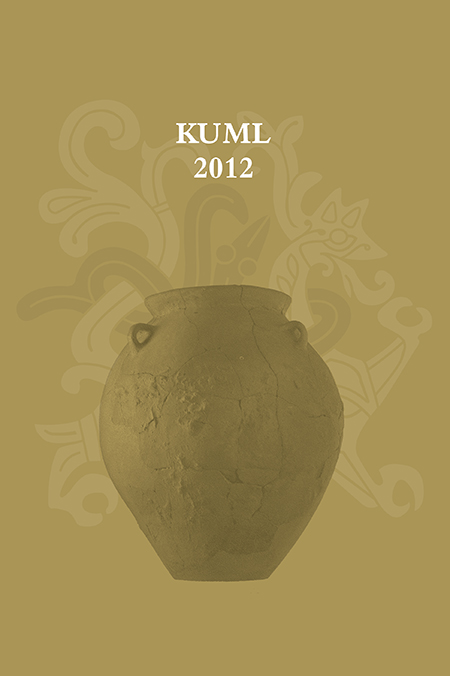Hedeby og den danske kongemagt i 900-tallet – Mønternes udsagn
DOI:
https://doi.org/10.7146/kuml.v61i61.24499Keywords:
Hedeby, kongemagt, 900-tallet, mønterAbstract
Haithabu and the Danish monarchy in the 10th century
Numismatic evidence
In the 10th century, Haithabu and its environs constituted a numismatic enclave with its own coinage used by number rather than by weight. This is apparent both from hoards located in the town’s hinterland and single finds from the town itself. In these, local coins – imitations of Charlemagne’s coins from Dorestad – dominate in the form of intact speciments that are neither bent nor tested. At that time in Scandinavia and Baltic area it was the norm to use silver as payment by weight. Ornaments and coins from many different origins were used and these were cut up to give the required weight; the quality of the metal was tested by bending and nicking and pecking. Finds of Islamic dirhams and characteristic balance weights for weighing silver do, however, show that this latter usage of coins also took place in the Schlei area and Haithabu. Unfortunately, it is not possible to determine from the archaeological record whether these two ways of using coins and silver reflect two chronological phases or, alternatively, two coeval parallel spheres of coin usage – one internal with exclusive use of its own coinage and one external with acceptance of silver according to weight, when trading with foreign merchants.
Over the past decade, excavations and metal-detector surveys in Haithabu have yielded several speciments of Danish king Harald Bluetooth’s characteristic cross-motif coin from AD 975/980-985/990, which was previously conspicuous by its absence. These new finds show that, in Haithabu, cross-motif coins fulfilled the function of local coinage used by number following cessation of minting of the earlier Carolus-Dorestad imitations. These cross-motif coins must, accordingly, have been struck in Haithabu itself.
The distribution of records of cross-motif coins across the rest of Denmark suggests that Harald used this coinage as gifts to his nobles and, accordingly, it symbolises the king. It is not simply happenstance that Christian symbols occupy a prominent position on the coin motif. The coins were used to spread and promote the new religion. Consequently, the king himself must be presumed to have been the issuing power. In turn, this means that the place where the coins were minted – Haithabu – must have been under Danish control at that particular time. So the hypothesis of German rule in Haithabu during the period AD 974-983 is no longer tenable. It also means that the coinage which supplied Haithabu’s well-organised coin economy at that time was under the king’s control. As it is well documented for later periods, the king probably demanded a fee for exchange to this coinage and thereby generated an income.
Two small hoards from Nonnebakken in Odense suggest that Harald also controlled coin production in Haithabu prior to AD 975/980. These consist largely of Carolus-Dorestad imitations minted in Haithabu, and their find circumstances suggest that they could represent royal payments in connection with construction of the ring fortress. However, this hypothesis builds on a flimsy foundation. Hopefully, new finds will allow it to be confirmed or refuted. At that time, the minting of Carolus-Dorestad imitations was in a lamentable state both technically and in terms of weight, and Harald’s introduction of the cross-motif coin can be perceived as a reform with the intention of re-establishing the good standard.
The sources do not permit us to ascertain whether coinage in Haithabu prior to the 10th century was under the control of the king or the merchants. As mentioned above, the coins were used by Haithabu’s merchants in the town’s well-organised coin economy. There are historical parallels to both the town producing its own coins and to royal control, making it difficult to choose between the two possibilities. The coins found their way to other parts of Denmark but did not achieve a dominant status until around AD 975. The archaeological record also shows that they were simply used here in the same way as any other type of coin in the predominant metal-weight economy. Consequently, the Danish monarchy probably did not favour their overall distribution at this time.
Jens Christian Moesgård
Nationalmuseet
Downloads
Published
How to Cite
Issue
Section
License
Fra og med årgang 2022 er artikler udgivet i Kuml med en licens fra Creative Commons (CC BY-NC-SA 4.0).
Alle tidligere årgange af tidsskriftet er ikke udgivet med en licens fra Creative Commons.


